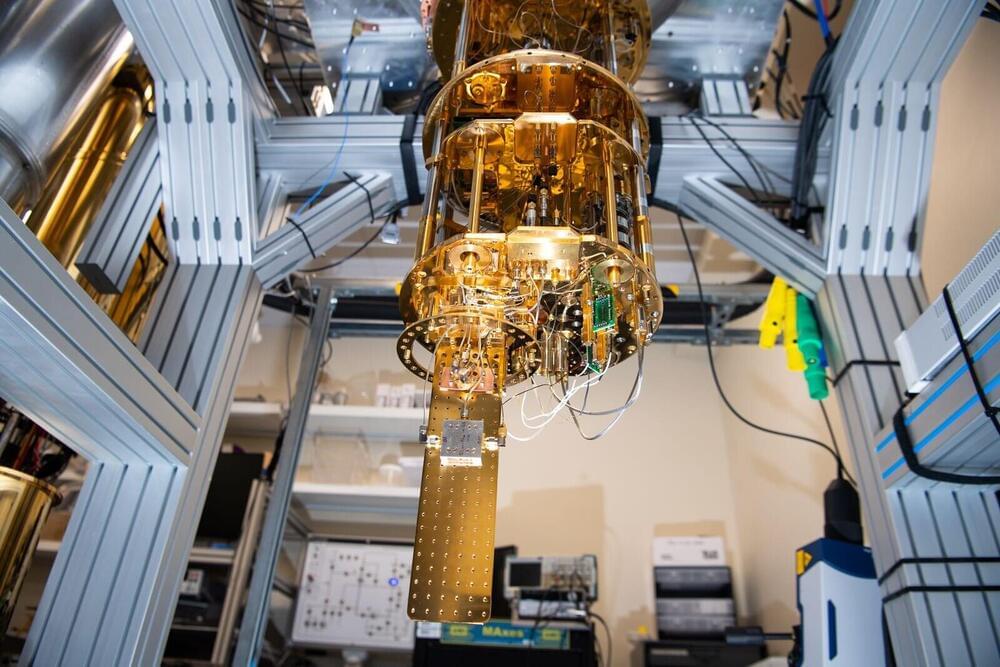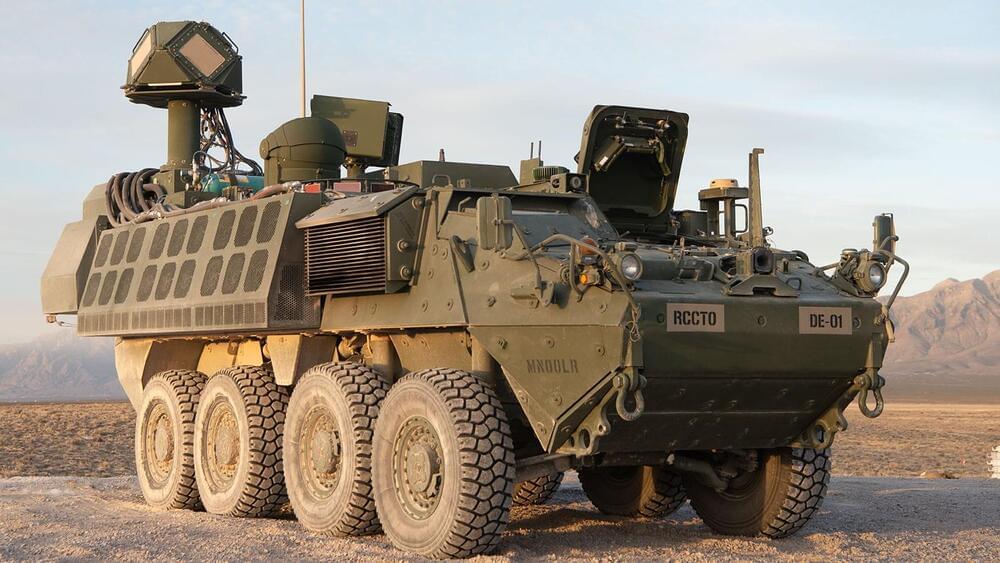An analyst says the video shared online “is a very good example of Russian strategy” but not necessarily an imminent threat.



Defense officials fear Russian President Vladimir Putin may flex his military power by testing a massive nuclear torpedo called Poseidon, a report said.
NATO reportedly issued an intelligence report to its members and allies warning that the Kremlin is planning to test so-called “doomsday” nuclear torpedo drones, a senior UK defense source told the Times of London on Monday.
Poseidon is a long-range undersea nuke designed to hit coastal cities at extremely long range by traveling to targets underwater.

Up to 250,000 troops will receive the new service, Google officials confirmed in a blog post. The number aligns with the shortage of Microsoft 365 licenses that Army Times previously identified.
Google Workspace is already used by the Air Force Research Laboratory and various other federal entities. The Army Software Factory was also an early adopter; now, they’ll be permanent Google users.
The launch of Workspace for the Army at large follows months of evaluation behind the scenes.
Please Support The Channel:
YouTube Super Thanks (click below)
YouTube Membership (click below)
https://www.buymeacoffee.com/JoeBlogs.
https://www.patreon.com/joeblogsYT
Amazon Shopping USA — https://amzn.to/3qwnwHB
Amazon Shopping UK — https://amzn.to/3LbHjFL
Amazon Shopping Canada — https://amzn.to/3BIyXlS
Amazon Shopping Australia — https://amzn.to/3eHQZvy.
Click thro the link, buy your items as normal and Amazon will pay me a small commission.
Russia is LOSING the War against Ukraine and has RETREATED from the Key Town of LYMAN which it has held since May and was used as a Supply & Transport HUB for the North of Ukraine. In Direct Response one of President Putin’s RIGHT HAND MEN has Urged Russia to Launch LOW YIELD NUCLEAR STRIKES on Ukraine. In this video I provide full details of the latest situation, as well as providing on update on the NORD STREAM Pipelines, European Gas SUPPLY and details of what a Low Yield Nuclear Bomb is. Finally I provide my view on the implications of the current situation for both Russia & the GLOBAL ECONOMY.
For specific details please check out the CHAPTER list below.
Thanks for watching and please LIKE and SUBSCRIBE.
If you like this video and are would like to buy me a coffee please click the link below. THANK YOU it is very much appreciated.

There was more to this launch than met the eye.
Earth’s first-ever artificial satellite Sputnik launched on October 4, 1957. In that moment, which occurred sixty-five years ago, the Cold War between the United States and the Soviet Union transformed into a race to dominate not only Earth but also space.
But there was more to the launch than met the eye — behind the development of satellites to orbit Earth was a more nefarious purpose.
“The other aspect of it was, of course, the race to develop the first intercontinental ballistic missile. The U.S. was working on the Atlas missile, and the Russians were working on the RS-7,” says Jonathan McDowell, an astronomer and astrophysicist at the Harvard–Smithsonian Center for Astrophysics.

SEOUL, South Korea — North Korea on Tuesday fired an intermediate-range ballistic missile over Japan, its neighbors said, escalating tests of weapons designed to strike key targets in regional U.S. allies.
It is the most significant missile test by North Korea since January, when it fired the Hwasong-12 intermediate-range missile capable of reaching the U.S. territory of Guam. It is also the first time that a North Korean missile has flown over Japan since 2017.
The Japanese prime minister’s office said at least one missile fired from North Korea flew over Japan and was believed to have landed in the Pacific Ocean.

If you’ve ever tried to carry on a conversation in a noisy room, you’ll be able to relate to the scientists and engineers trying to “hear” the signals from experimental quantum computing devices called qubits. These basic units of quantum computers are early in their development and remain temperamental, subject to all manner of interference. Stray “noise” can masquerade as a functioning qubit or even render it inoperable.
That’s why physicist Christian Boutan and his Pacific Northwest National Laboratory (PNNL) colleagues were in celebration mode recently as they showed off PNNL’s first functional superconducting qubit. It’s not much to look at. Its case—the size of a pack of chewing gum—is connected to wires that transmit signals to a nearby panel of custom radiofrequency receivers. But most important, it’s nestled within a shiny gold cocoon called a dilution refrigerator and shielded from stray electrical signals. When the refrigerator is running, it is among the coldest places on Earth, so very close to absolute zero, less than 6 millikelvin (about −460 degrees F).
The extreme cold and isolation transform the sensitive superconducting device into a functional qubit and slow down the movement of atoms that would destroy the qubit state. Then, the researchers listen for a characteristic signal, a blip on their radiofrequency receivers. The blip is akin to radar signals that the military uses to detect the presence of aircraft. Just as traditional radar systems transmit radio waves and then listen for returning waves, the physicists at PNNL have used a low-temperature detection technique to “hear” the presence of a qubit by broadcasting carefully crafted signals and decoding the returning message.
Once the first artificial super intelligence is created it will help us recursively improve ourselves and then the post human millennium will begin.
Thinking this will prevent war, the US government gives an impenetrable supercomputer total control over launching nuclear missiles. But what the computer does with the power is unimaginable to its creators.

Putin has previously threatened to resort to nuclear weapons if Russia’s goals in Ukraine continue to be thwarted. The annexation brings the use of a nuclear weapon a step closer by giving Putin a potential justification on the grounds that “the territorial integrity of our country is threatened,” as he put it in his speech last week.
He renewed the threat on Friday with an ominous comment that the U.S. atomic bombing of Hiroshima and Nagasaki created a “precedent” for the use of nuclear weapons, echoing references he has made in the past to the U.S. invasion of Iraq as setting a precedent for Russia’s invasion of Ukraine.

LAS CRUCES, N.M., May 16, 2022 /PRNewswire/ — In four weeks of continuous live-fire exercises, an industry team led by Raytheon Intelligence & Space, a Raytheon Technologies (NYSE: RTX) business, and Kord, a wholly owned subsidiary of KBR, defeated multiple 60mm mortar rounds with a 50kW-class high energy laser integrated on a Stryker combat vehicle.
The directed energy weapon system — part of the U.S. Army’s Directed Energy Maneuver-Short Range Air Defense, or DE M-SHORAD — acquired, tracked, targeted and defeated multiple mortars and successfully accomplished multiple tests simulating real-world scenarios.
Continuing to put the DE M-SHORAD system to the test, the recent operational assessment at White Sands Missile Range also included defeating several small, medium and large drones.